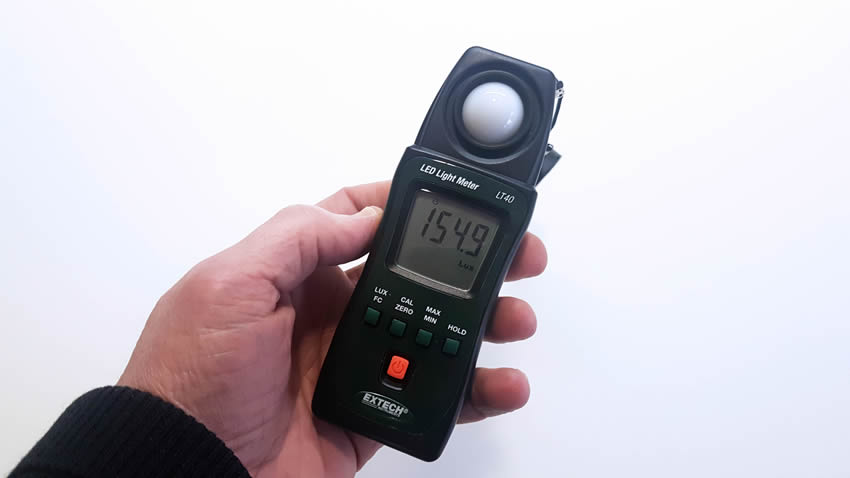
Lux Light Level Testing for Offices and Commercial Environments
Introduction
It is now standard practice that lux light level testing for offices and commercial environments is carried out at regular intervals. This testing measures and records the amount of light (measured in lux) that individuals are exposed to where they work, relax, or shop.
At present, health and safety requirements state that enough light has to be provided for the specific task to keep people safe from harm in all environments. Nevertheless, without the correct level of light, it can not only be dangerous but also can have a diverse effect on people’s health and well-being. Some of the most common complaints due to poorly executed lighting are symptoms like eye strain, headaches, and, of course, accidents.
Numerous charts show guidelines for the lux levels that these spaces should achieve. However, these are merely guidelines. This is partly because people perceive light in different ways and on different levels. What one person finds adequate, another might find too bright. There are also those with poor or partial sight to be considered, who generally require more light. Below are a few other things to consider when setting the right amount of light required for a space that encourages well-being:

Top 10 lighting design tips that encourage a well-being factor
1. Colour temperature
Firstly, cool white (5000 or 6000 Kelvin) LED lighting is wonderful for making the space look fresh and contemporary. However, given an equal amount of time exposure to each, this type of light is harsher on the eyes than a warmer (2700K-3000K) LED light source.
2. Glare
Are the lighting fittings fitted with diffusers to minimise glare?
3. Reflections
Are the surfaces reflecting the light up into people’s eyes?
4. Light cut off points
The angle that light is emitted from the light fittings.
5. Flooring choice
Carpet will absorb light, reducing the amount of light reflected up into the space, while hard floor finishes will generally have the opposite effect.
6. Wall colour
The lighter the wall colour again, the less amount of light it will absorb. However, a pale green can be calming to the eye.
7. Positioning
Where the lights are positioned will also play a key part in the comfort level.
8. Type
LED panels, task lighting, and up-and-down lighting are all examples of lighting that have advantages and disadvantages.
9. Output
The amount of lumens given out by a light source will reduce over time.
10. Visible light
Lastly, keep in mind the amount of light the human eye can perceive.
In the field of M&E, many lighting designers and companies rely on computer software to determine the light output of specified fittings. However, our experience has shown that this method can only provide an approximate estimate of the delivered light levels and may prove to be inaccurate in practice.
To mitigate this issue, our team advocates for a traditional lighting mock-up approach, in which the chosen light fittings are tested to evaluate their lux levels and ability to produce the desired effect. Our team of lighting designers offers bespoke light level surveys, also referred to as lux level testing, that are tailored to the specific requirements of your office or commercial environment.
By adopting this approach, we aim to provide a more accurate and reliable assessment of the delivered light levels to ensure that the lighting meets your precise needs. Our team’s expertise and experience in this area can assist you in achieving optimal lighting levels that enhance the functionality and aesthetics of your space.




